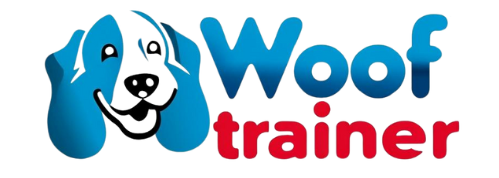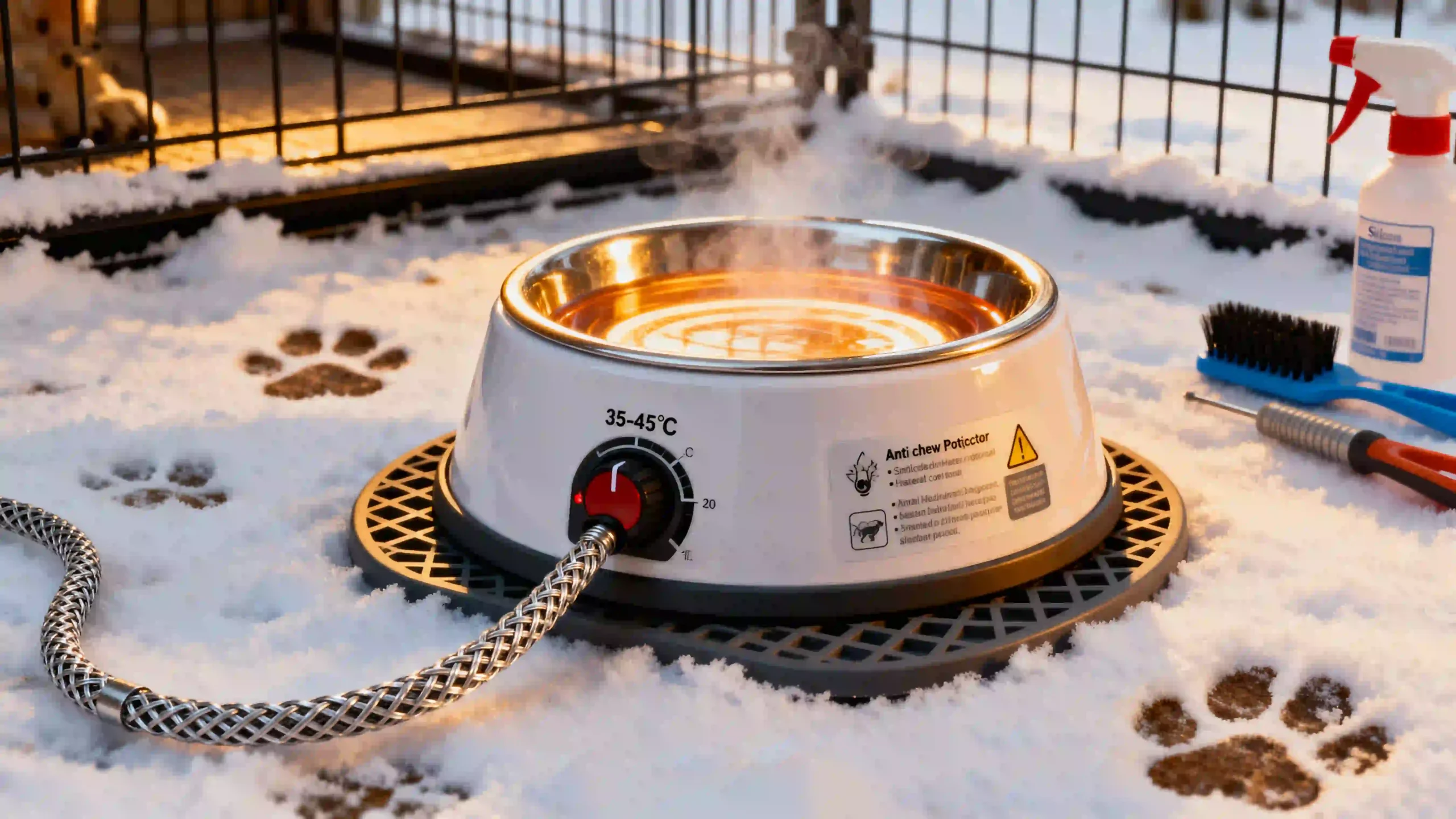You run a kennel, you’ve got long, bitter winters ahead. Your dogs (pups, adults, boarders) still need water that’s unfrozen, clean, and safe. Winter-proofing your hydration setup isn’t just buying bowls—it’s assembling a kit of equipment that ensures safety, health, and efficiency. Here’s the ultimate kennel gear checklist for what to have before the first freeze.
Why This Gear Matters
- Preventing frozen water saves you emergency trips, dog dehydration, behavior issues.
- Having reliable equipment means fewer replacements mid-winter.
- Proper gear protects dogs from health risks (cold water, bacteria) and protects staff from hazards (slips, electrical issues).
You can see this in earlier guides: Why Heated Water Bowls Are a Breeder’s Best Friend in Winter and other resources document the difference in dog health and kennel efficiency when the right gear is in place.
Core Equipment List
Here are the items you should have in your winter kennel heated bowls toolkit, grouped by function.
| Item | Purpose | Key Specification/Feature |
|---|---|---|
| Heavy-duty heated dog bowls | Primary water source; must resist cold, handle frequent use | Look for large capacity (≥1.5 gal), thermostatically controlled, durable materials like stainless steel or cold-rated plastic. Example: the Farm Innovators 6-qt Round Heated Plastic Pet Bowl with anti-chew cord protector. |
| Bucket heaters / de-icer discs | For large shared water sources—buckets/pails/tanks | Discs rated for gallons used, cord protection, insulation; install safe float valves if possible. |
| Chew-proof cords & cord guards | Prevent electrical damage and safety hazards | Stainless steel wrap, thick insulation, clips or conduits to keep cords off ground. |
| Shelters or windbreaks | Reduce wind chill, protect bowls from snow, extend heating efficiency | Enclosures, lean-tos, side panels, roof over runs; protect equipment near doors and windows. |
| Thermostatic controllers or sensors | Keeps power use efficient, avoids overheating, avoids wasted heat when temps are mild | Units that cycle heating only when water or ambient temp drops below threshold. |
| Non-slip, tip-resistant bases | Prevent spills, reduce mess and slip risk | Rubber rings, wide bases, heavy bowls. |
| Multiple units per run / strategic placement | Ensures redundancy, easier access, less staff travel | Bowls in each run; shared bucket in communal area; match water capacity to dog count. |
| Sanitation & cleaning supplies | Maintaining water quality and safety | Brushes, disinfectants (pet-safe), rust-inhibiting cleaners, spare parts. |
| Backup power / emergency supplies | Power failures happen; snow storms, outages, etc. | Generators, portable heated units, extra bowls, spare cords. |
| Documentation & training materials | Staff awareness ensures safe usage and gear longevity | Written checklists, signage, safety policies; include guidelines similar to those in Heated Dog Bowls: The Complete Guide to Keeping Pets Hydrated in Winter. |
Additional Features Worth Investing In
These aren’t absolutely required, but they elevate performance and reduce maintenance headaches.
- Insulated water line or raised feeders: If water hoses or plumbing are involved, insulate them. Raise bowls so ground cold/snow contact is reduced.
- Auto-refill or float valve systems: When paired with heated buckets or bowls, water automation reduces staff time.
- Indicator or temperature alarms: Bowls or units that indicate when they fail, overheat, or when water level is low.
- Power surge protectors / GFCI protected circuits: To protect equipment and prevent safety issues.
- Spare parts kit: A few extra cords, plug assemblies, thermostats, hardware so you can do quick field repairs.
Sample Checklist: What to Buy Early Before Winter
Here is a sample shopping checklist to order well in advance:
- 5-10 heavy-duty heated dog bowls (large capacity)
- 2-3 bucket heaters or de-icer discs for large tubs or shared waterers
- Pack of chew-proof/steel-wrapped cords + cord guards
- Shelters or windbreak panels for critical run locations
- Thermostatic control units (if not built-in)
- Non-slip bases or stabilizers
- Cleaning & disinfecting supplies (brushes, pet-safe sanitizer, spare bowls)
- Fire safety / power backup: GFCI outlets, surge protectors, generator or battery backup if feasible
- Training materials and documentation for staff
Implementation Tips for Smooth Wintering
- Install all heated bowls and bucket heaters before first hard freeze — test them, inspect cords, ensure placement is optimal.
- Map out runs by exposure: south-facing or sheltered areas may need less capacity; exposed runs may need more or bucket heaters plus shelter.
- Create a rota for cleaning & inspection — daily for water, weekly for cords and performance.
- Monitor power use — heated bowls are thermostatically controlled, but cold and wind drag make them run more; understanding this helps budget.
- Plan for emergencies — power outage, bowl failure, cord damage. Having backups in place reduces stress.
Case Studies & Market Examples
- The Farm Innovators 6-qt Round Heated Plastic Pet Bowl is a widely available model with 1.5 gal capacity, thermostatic control, and anti-chew cord protector. It’s frequently recommended in outdoor kennel water gear lists.
- In blogs like How to Keep Your Dog’s Water from Freezing, tips emphasize combining insulated bowls, heated units, and de-icers to reduce ice build-ups and maintain hydration without high manual labor.
- For boarding facilities, winterizing often means adding shelters, upgrading cords, and ensuring easy cleaning surfaces—features present in top rated heated pet bowls in 2025 reviews.
Your Complete Winter Kennel Hydration System Plan
To tie it all together:
- Assess current water needs: dog numbers, drink volume in cold, number of runs.
- Audit current equipment: what heated bowls, buckets, shelters, and wiring you already have.
- Purchase core items early using checklist above. Prioritize heavy-duty bowls, cord protection, shelters.
- Install and test all units before freeze—check heating, cord safety, thermostat behavior.
- Train staff and document routines—cleaning, inspection, emergency protocols.
- Monitor usage, failures, utility—collect data so you can improve next winter.
FAQ
-
How many heated dog bowls do I need per kennel run?
It depends on dog count and run exposure. As a guideline, have one bowl for every 2-4 dogs in large runs; for individual run or mom/puppy pens, one per pen. Ensure buckets or shared waterers fill in gaps. -
Is stainless steel or plastic better for winter kennel heated bowls?
Stainless steel is more durable under freeze-thaw cycles, resists damage, easier to clean; good plastics are lighter and cheaper but must be cold-rated and thick to avoid cracking. -
What wattage should a bowl be rated for to survive −20 °C conditions?
You’ll need bowls with sufficient wattage and good insulation. Many bowls rated for −20 °F (≈−29 °C) exist, but performance depends on insulation, wind exposure, and amount of water. A bowl with thermostat + insulating housing helps reduce needed wattage. -
Do bucket heaters cost much more than multiple bowls?
Bucket heaters often have higher draw, especially in exposed conditions, but because buckets have larger thermal mass, they may run less continuously. When budgeting, compare both energy cost and labor saved. Hybrid setups often offer best ROI. -
What safety features are non-negotiable?
Chew-proof cords, GFCI/outdoor-rated outlets, thermostats that shut off, sealed heating elements, tip-resistant bowls, elevated placement to avoid water pooling, shelters, backup power or spare units. -
How do I maintain water hygiene during winter?
Change water daily or when dirty, deep clean bowls weekly, sanitize with pet-safe disinfectants. Remove slush/debris, ensure drainage under bowls to avoid frozen runoff. Clean underneath bowl and around thermostat for best heat transfer. -
How can I reduce power bills while keeping water from freezing?
Use insulated shelters/windbreaks, use thermostat controlled bowls, choose units with high insulation and low heat loss, place bowls in more protected areas, turn off or unplug for moderate days, use backup automated systems only where needed. -
What backup plan should I have in case of power failures?
Keep spare bowls, spare working units, portable heated units or backup generators, and ensure some unheated but accessible water sources during outage. Map emergency routines for staff to follow. -
How early should I winterize my heated dog bowl system?
Before first hard freeze (often a few weeks before expected low temps), including ordering new bowls/heaters, installing shelters, verifying electrical circuit safety, training staff. -
Where should I source quality heated kennel bowls and gear?
Look for vendors with proven durability, parts availability, warranty. Examples like Wooftrainer, Farm Innovators, K&H Pet, etc. Also read roundups such as “7 Best Heated Dog Bowls 2025 – Reviews & Top Picks” for field insights.


